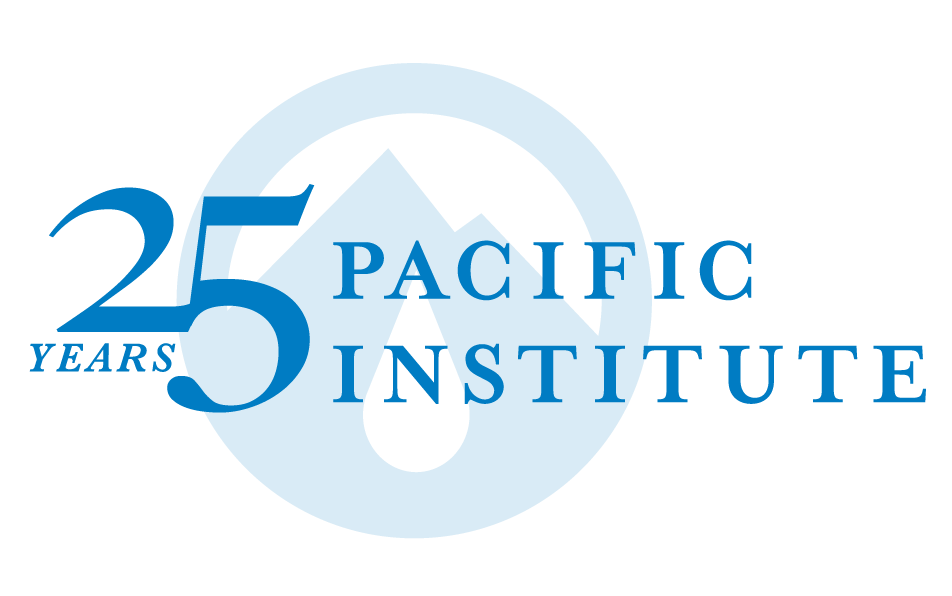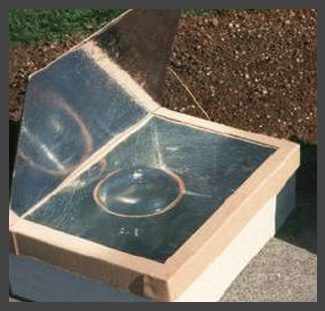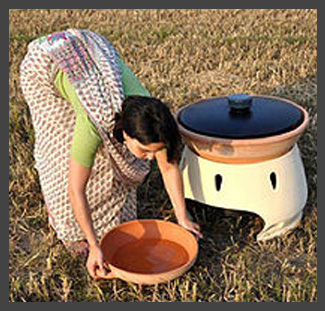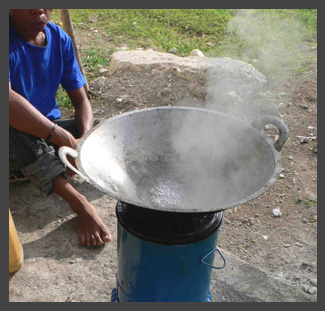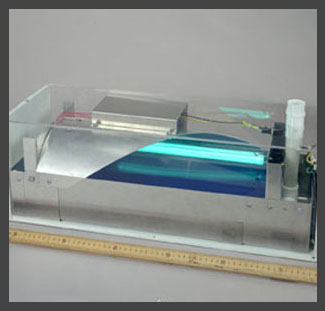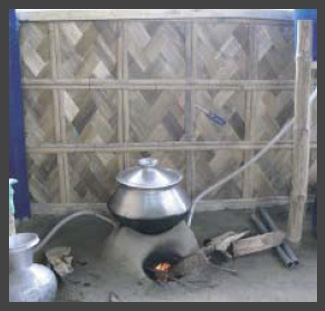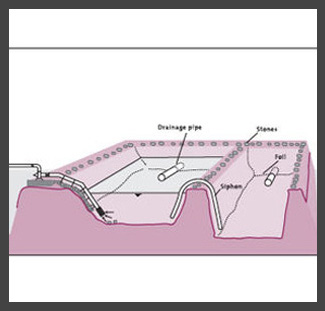Difference between revisions of "HWTS - Physical"
From Akvopedia
(Created page with "Household water treatment and safe storage (HWTS) has emerged as a viable solution for small and large populations, especially in rural areas. HWTS interventions can lead to dram...") |
(→HTWS filtration links) |
||
| (48 intermediate revisions by 2 users not shown) | |||
| Line 1: | Line 1: | ||
| + | {{Language-box|english_link=HWTS - Physical |french_link=HWTS_-_Traitement_physique |spanish_link=Coming soon|hindi_link=Coming soon|malayalam_link=Coming soon|tamil_link=Coming soon | korean_link=Coming soon | chinese_link=家庭水处理和安全储存 - 物理方法 | indonesian_link=Coming soon | japanese_link=Coming soon}} | ||
| + | |||
| + | [[Image:Pac Institute logo.png|thumb|right|130px|The [http://pacinst.org/issues/water-and-poverty/community-choices-system/ Community Choices] tool from [http://www.pacinst.org/ The Pacific Institute].]] | ||
| + | <small-title /> | ||
Household water treatment and safe storage (HWTS) has emerged as a viable solution for small and large populations, especially in rural areas. HWTS interventions can lead to dramatic improvements in drinking water quality and reductions in diarrhoeal disease, making an immediate difference to the lives of those who rely on water from polluted rivers, lakes and, in some cases, unsafe wells or piped water supplies. | Household water treatment and safe storage (HWTS) has emerged as a viable solution for small and large populations, especially in rural areas. HWTS interventions can lead to dramatic improvements in drinking water quality and reductions in diarrhoeal disease, making an immediate difference to the lives of those who rely on water from polluted rivers, lakes and, in some cases, unsafe wells or piped water supplies. | ||
| − | + | To decide which household water technology is most appropriate for your needs, financials, and preferences, try using the [http://pacinst.org/issues/water-and-poverty/community-choices-system/ Community Choices] tool by [http://www.pacinst.org/ The Pacific Institute]. It walks you through a brief survey to consider variables for the right HWTS treatment in '''Ghana, Burkina Faso, Australia and the US'''. | |
| − | {| | + | <br> |
| + | <br> | ||
| + | <br> | ||
| + | <br> | ||
| + | <div style=" background-color: #efefef; text-align: center; -moz-border-radius: 2px; -webkit-border-radius: 2px; border: 5px solid #dedede; padding: 5px;" > | ||
| + | {|cellpadding="5" cellspacing="0" width="100%" | ||
| + | |- | ||
| + | |colspan="5" style="background-color:#efefef;"| | ||
| + | |- | ||
| + | |style="background:#efefef;"|[[Image:250px-Sodis small.png|center|100px|link=UV treatment / Solar disinfection (SODIS)]] | ||
| + | |style="background:#efefef;"|[[Image:300px-Solar_pasteur_box small.jpg|center|100px|link=Solar Pasteurization]] | ||
| + | |style="background:#efefef;"|[[Image:350px-SolarDistiller small.jpg|center|100px|link=Desalination / Evaporation]] | ||
| + | |style="background:#efefef;"|[[Image:boiling water small.jpg|center|100px|link=Boiling]] | ||
| + | |style="background:#efefef;"|[[Image:UV lamps small.jpg|center|100px|link=UV treatment with lamps]] | ||
|- | |- | ||
| − | + | |style="background:#efefef;"|<div class="center" style="width:auto; margin-left:auto; margin-right:auto;">[[UV_treatment_/_Solar_disinfection_%28SODIS%29|UV treatment / Solar <br>disinfection (SODIS)]]</div> | |
| + | |style="background:#efefef;"|<div class="center" style="width:auto; margin-left:auto; margin-right:auto;">[[Solar Pasteurization]]</div> | ||
| + | |style="background:#efefef;"|<div class="center" style="width:auto; margin-left:auto; margin-right:auto;">[[Desalination / Evaporation]]</div> | ||
| + | |style="background:#efefef;"|<div class="center" style="width:auto; margin-left:auto; margin-right:auto;">[[Boiling]]</div> | ||
| + | |style="background:#efefef;"|<div class="center" style="width:auto; margin-left:auto; margin-right:auto;">[[UV treatment with lamps]]</div> | ||
|- | |- | ||
| − | | | + | |colspan="5" style="background-color:#efefef;"| |
| − | |||
| − | | | ||
| − | |||
|- | |- | ||
| − | | | + | |colspan="5" style="background-color:#DEDEDE;"| |
| − | |||
| − | |||
| − | |||
|- | |- | ||
| − | | | + | |colspan="5" style="background-color:#efefef;"| |
| − | |||
| − | |||
| − | |||
| − | |||
|- | |- | ||
| − | |[[Image: | + | |style="background:#efefef;"|[[Image:Chulli_pasteurization small.jpg|center|100px|link=Chulli pasteurization]] |
| − | |[[Image: | + | |style="background:#efefef;"|[[Image:250px-Moringa_seed_pods small.jpg|center|100px|link=Natural coagulation / Flocculation]] |
| − | |[[Image: | + | |style="background:#efefef;"|[[Image:300px-Storage_and_sedimentation small.jpg|center|100px|link=Storage / Pre-settlement]] |
| − | |[[Image: | + | |style="background:#efefef;"|[[Image:300px-Aeration_cone small.jpg|center|100px|link=Aeration]] |
| + | |style="background:#efefef;"| | ||
|- | |- | ||
| − | | | + | |style="background:#efefef;"|<div class="center" style="width:auto; margin-left:auto; margin-right:auto;">[[Chulli pasteurization]]</div> |
| − | | | + | |style="background:#efefef;"|<div class="center" style="width:auto; margin-left:auto; margin-right:auto;">[[Natural_coagulation_/_Flocculation|Natural coagulation <br>/ Flocculation]]</div> |
| − | | | + | |style="background:#efefef;"|<div class="center" style="width:auto; margin-left:auto; margin-right:auto;">[[Storage / Pre-settlement]]</div> |
| − | | | + | |style="background:#efefef;"|<div class="center" style="width:auto; margin-left:auto; margin-right:auto;">[[Aeration]]</div> |
| + | |style="background:#efefef;"| | ||
|- | |- | ||
| − | | | + | |colspan="5" style="background-color:#efefef;"| |
| − | |||
| − | |||
| − | | | ||
|} | |} | ||
| − | + | </div> | |
| − | + | <br> | |
| − | + | ===HTWS filtration links=== | |
| − | ==HTWS filtration links== | + | * To accelerate health gains to those without reliable access to safe drinking water, WHO established the International Network to Promote HWTS in 2003. The informal network format optimizes flexibility, participation and creativity to support coordinated action. [https://www.who.int/water_sanitation_health/water-quality/small-community-management/scwsm_network/en/ The Network]. |
| − | * To accelerate health gains to those without reliable access to safe drinking water, WHO established the International Network to Promote HWTS in 2003. The informal network format optimizes flexibility, participation and creativity to support coordinated action. [ | ||
Latest revision as of 00:55, 28 October 2019
| |
|
|
|
|
|
|
|
|
Household water treatment and safe storage (HWTS) has emerged as a viable solution for small and large populations, especially in rural areas. HWTS interventions can lead to dramatic improvements in drinking water quality and reductions in diarrhoeal disease, making an immediate difference to the lives of those who rely on water from polluted rivers, lakes and, in some cases, unsafe wells or piped water supplies.
To decide which household water technology is most appropriate for your needs, financials, and preferences, try using the Community Choices tool by The Pacific Institute. It walks you through a brief survey to consider variables for the right HWTS treatment in Ghana, Burkina Faso, Australia and the US.
HTWS filtration links
- To accelerate health gains to those without reliable access to safe drinking water, WHO established the International Network to Promote HWTS in 2003. The informal network format optimizes flexibility, participation and creativity to support coordinated action. The Network.
